Cover
Half Title
Title Page
Copyright Page
Dedication
Contents
Preface
Acknowledgments
About the Author
1. Introduction to Random Signals
Learning Objectives
1.1 Introduction to Set Theory
1.1.1 Union and Intersection
1.1.2 Algebra of Sets
1.1.3 De Morgan’s Laws
1.1.4 Duality Principle
Concept Check
1.2 Probability
1.2.1 Conditional Probability
1.2.2 Bayes’ Theorem
1.2.2.1 Alternative Statement of Bayes’ Theorem
1.2.3 Mutually Exclusive and Independent Events
Concept Check
1.3 Random Variable
1.3.1 Cumulative Distribution Function (CDF)
1.3.2 Probability Density Function (pdf)
Concept Check
1.4 Standard Distribution Functions
1.4.1 Probability Distribution Functions for Continuous Variables
1.4.2 Probability Distribution Functions for Discrete Variables
1.4.2.1 Permutations
1.4.2.2 Combinations
1.4.2.3 Bernoulli’s Trials
1.4.2.4 Binomial Distribution
1.4.2.5 Poisson Distribution
Concept Check
1.5 Central Limit Theorem, Chi-Square Test, and Kolmogorov–Smirnov Test
1.5.1 Central Limit Theorem
1.5.2 Computer Generation of a Gaussian Distributed Random Variable
1.5.3 Chi-Square Test
1.5.4 Kolmogorov–Smirnov Test
Concept Check
Summary
Key Terms
Multiple-Choice Questions
Review Questions
Problems
Answers
Multiple-Choice Questions
Problems
2. Properties of Random Variables
Learning Objectives
2.1 Statistical Properties of Random Variables
Concept Check
2.2 Functions for Finding Moments
Concept Check
2.3 Transformations of a Random Variable
2.3.1 Monotonic Transformations of a Random Variable
2.3.2 Multiple-Valued Transformations of a Random Variable
2.3.3 Computer Generation of a Transformed Variable
Concept Check
2.4 Computation of the Energy Density Spectrum of a Deterministic Signal
2.4.1 Estimation of Power Density Spectrum of Random Signal
2.4.2 Use of Discrete Fourier Transform (DFT) for Power Spectrum Estimation
Concept Check
Summary
Key Terms
Multiple-Choice Questions
Review Questions
Problems
Answers
Multiple-Choice Questions
Problems
3. Multiple Random Variables and Random Process
Learning Objectives
3.1 Multiple Random Variables
3.1.1 Marginal Density Functions and Statistical Independence
3.1.2 Operations on Multiple Random Variables
Concept Check
3.2 Modeling a Random Signal
3.2.1 AR, MA, and ARMA Modeling
Concept Check
3.3 Random Processes
3.3.1 Stationary and Nonstationary Process
3.3.2 Stationary Processes
3.3.3 N[sup(th)] Order or Strict Sense Stationary Process
Concept Check
Summary
Key Terms
Multiple-Choice Questions
Review Questions
Problems
Answers
Multiple-Choice Questions
Problems
4. Detection and Estimation
4.1 Basics of Communication Theory
4.1.1 Transmitter
4.1.1.1 Justicfiation for Sampling and Quantization of Analog Signals
4.1.2 Channel
4.1.3 Receiver
Concept Check
4.2 Linear but Time Varying Systems
4.2.1 Filter Characteristics of Linear Systems
4.2.2 Distortionless Transmission through a System
4.2.2.1 Signal Bandwidth
4.2.3 Ideal Low-Pass Filter, High-Pass Filter, and Bandpass Filter Characteristics
4.2.4 Causality and Paley–Wiener Criteria
4.2.4.1 Statement of the Theorem
4.2.5 Relation between Bandwidth and Rise Time
Concept Check
4.3 Optimum Detection
4.3.1 Weighted Probabilities and Hypothesis Testing
4.3.2 Bayes Criterion
4.3.3 Minimax Criterion
4.3.4 Neyman–Pearson Criterion
4.3.5 Receiver Operating Characteristics
Concept Check
4.4 Estimation Theory
Concept Check
Summary
Keywords
Multiple-Choice Questions
Review Questions
Answers
Multiple-Choice Questions
5. Fundamentals of Speech Processing
Learning Objectives
5.1 LTI and LTV Models for Speech Production
5.1.1 LTI Model for Speech
5.1.2 Nature of Speech Signal
5.1.3 LTV Model
Concept Check
5.2 Voiced and Unvoiced Decision-Making
Analysis of the MATLAB Program Output
Concept Check
5.3 Audio File Formats—Nature of .wav File
Concept Check
5.4 Extraction of Fundamental Frequency
5.4.1 Fundamental Frequency or Pitch Frequency
5.4.1.1 Autocorrelation Method for Finding Pitch Period of a Voiced Speech Segment
5.4.1.2 AMDF Method for Finding Pitch Period of a Voiced Speech Segment
5.4.2 Pitch Contour
5.4.3 Pitch Period Measurement in Spectral Domain
5.4.3.1 Spectral Autocorrelation Method for Pitch Measurement
5.4.4 Cepstral Domain
5.4.5 Pitch Period Measurement Using Cepstral Domain
5.4.5.1 Interpretation of the Result
5.4.5.2 Interpretation of the Result
Concept Check
5.5 Formants and Relation of Formants with LPC
5.5.1 Practical Considerations
Concept Check
5.6 Evaluation of Formants
5.6.1 Evaluation of Formants Using Cepstrum
5.6.1.1 Evaluation of Formants for Voiced Speech Segment
5.6.1.2 Evaluation of Formants for Unvoiced Segment
5.6.2 Evaluation of Formants Using the Log Spectrum
5.6.2.1 Evaluation of Formants for Voiced Speech Segment
5.6.2.2 Evaluation of Formants for Unvoiced Segment
Concept Check
5.7 Evaluation of MFCC
5.7.1 Homomorphic Processing
5.7.2 The Auditory System as a Filter Bank
5.7.3 Mel Frequency Cepstral Coefcfiients
Concept Check
5.8 Evaluation of LPC
5.8.1 Forward Linear Prediction
5.8.2 Autocorrelation Method
Concept Check
Summary
Key Terms
Multiple-Choice Questions
Review Questions
Problems
Answers
Multiple-Choice Questions
Problems
6. Spectral Estimation of Random Signals
Learning Objectives
6.1 Estimation of Density Spectrum
6.1.1 Classicfiation of Signals
6.1.2 Power Spectral Density and Energy Spectral Density
6.1.2.1 Computation of Energy Density Spectrum of Deterministic Signals
6.1.2.2 Estimation of Power Density Spectrum of Random Signals
Concept Check
6.2 Nonparametric Methods
6.2.1 Use of DFT for Power Spectrum Estimation
6.2.2 Bartlett Method
6.2.3 Welch Method
6.2.4 Blackman–Tukey Method
6.2.5 Performance Comparison of Nonparametric Methods
Concept Check
6.3 Parametric Methods
6.3.1 Power Spectrum Estimation Using AR Model Parameters
6.3.2 Burg’s Method for Power Spectrum Estimation (Maximum Entropy Method—MEM)
6.3.3 Power Spectrum Estimation Using ARMA Model
6.3.4 Power Spectrum Estimation Using MA Model
Concept Check
6.4 Other Spectral Estimation Methods
6.4.1 Minimum Variance Power Spectrum Estimation
6.4.2 Eigen Analysis Algorithm for Spectrum Estimation
Concept Check
6.5 Evaluation of Formants Using the Power Spectral Density Estimate
6.5.1 Interpretation of the Results
Concept Check
6.6 Evaluation of Cepstrum
6.7 Evaluation of Higher Order Spectra
6.7.1 Cumulant Spectra
6.7.1.1 Indirect Method
6.7.1.2 Direct Method
Concept Check
Summary
Key Terms
Multiple-Choice Questions
Review Questions
Problems
Suggested Projects
Answers
Multiple Choice Questions
Problems
7. Statistical Speech Processing
Learning Objectives
7.1 Measurement of Statistical Parameters of Speech
Concept Check
7.2 Dynamic Time Warping
7.2.1 Linear Time Warping
7.2.2 Dynamic Time Warping
7.3 Statistical Sequence Recognition for Automatic Speech Recognition (ASR)
7.3.1 Bayes Rule
7.3.2 Hidden Markov Model
Concept Check
7.4 Statistical Pattern Recognition and Parameter Estimation
7.4.1 Statistical Parameter Estimation
7.4.2 Acoustic Probability Estimation for ASR
Concept Check
7.5 VQ-HMM-Based Speech Recognition
7.5.1 HMM Specicfiation and Model Training
7.5.1.1 Forward Algorithm
7.5.1.2 Backward Algorithm
7.5.1.3 Viterbi Algorithm
7.5.1.4 Baum–Welch Algorithm
7.5.1.5 Posterior Decoding
Concept Check
7.6 Discriminant Acoustic Probability Estimation
7.6.1 Discriminant Training
7.6.2 Use of Neural Networks
Concept Check
Summary
Key Terms
Multiple-Choice Questions
Review Questions
Problems
Answers
Multiple-Choice Questions
8. Transform Domain Speech Processing
Learning Objectives
8.1 Short Segment Analysis of Speech
8.1.1 Pitch Synchronous Analysis of Speech
Concept Check
8.2 Use of Transforms
8.2.1 Discrete Cosine Transform
Concept Check
8.3 Applications of DCT for Speech Processing
8.3.1 Signal Coding
8.3.2 Signal Filtering
8.3.3 Sampling Rate Conversion and Resizing
8.3.4 Feature Extraction and Recognition
Concept Check
8.4 Short-Time Fourier Transform (STFT)
Concept Check
8.5 Wavelet Transform
Concept Check
8.6 Haar Wavelet and Multiresolution Analysis
8.6.1 Multiresolution Analysis
Concept Check
8.7 Daubechies Wavelets
8.7.1 Matrix Multiplication Method for Computation of WT
8.7.2 Number of Operations
8.7.3 Time Band Width Product
Concept Check
8.8 Some Other Standard Wavelets
8.8.1 Mexican Hat Function
8.8.2 A Modulated Gaussian
8.8.3 Spline and Battle–Lemarie Wavelets
8.8.4 Biorthogonal Wavelets
8.8.5 Cohen–Daubechies–Feauveau Family of Biorthogonal Spline Wavelets
8.8.6 Wavelet Packets
8.8.6 1 Full Wavelet Packet Decomposition
Concept Check
8.9 Applications of WT
8.9.1 Denoising Using DWT
8.9.2 Signal Compression
8.9.3 Signal Filtering
8.9.4 Sampling Rate Conversion
Concept Check
Summary
Key Terms
Multiple-Choice Questions
Review Questions
Problems
Suggested Projects
Answers
Multiple-Choice Questions
Problems
9. Image Processing Techniques
Learning Objectives
9.1 Image Representation and Spatial Filtering
9.1.1 Edge Detection Using Spatial Filtering
9.1.2 Laplacian Mask
9.1.3 Laplacian of Gaussian
Concept Check
9.2 Transformations on Image
9.2.1 Linear Transformations
9.2.2 Gray-Level Slicing
9.2.3 Bit-Plane Slicing
9.2.3 Nonlinear Transformations
9.3 Histogram Equalization
9.3.1 Histogram Evaluation
9.3.2 Mapping the pdf Value with CDF
9.3.3 Histogram Equalization
9.3.4 Statistical Image Processing
Concept Check
9.4 Transform Domain Image Processing
9.4.1 Image Processing Using DCT
9.4.2 Image Processing Using WT
Concept Check
Summary
Key Terms
Multiple-Choice Questions
Review Questions
Problems
Answers
Multiple-Choice Questions
Problems
10. Applications of Random Signal Processing
Learning Objectives
10.1 Case Study 1: Handwritten Character Recognition
10.1.1 Components of an OCR System
10.1.2 Challenges in Devanagari Handwriting Recognition
10.1.3 Tree Classicfiation Based on Structural Features
10.1.4 Recognition Using Neural Network
10.2 Case Study 2: Writer Identicfiation and Vericfiation
10.2.1 Introduction
10.2.2 Importance of Writer Identicfiation and Vericfiation
10.2.3 Main Factors Discriminating Handwritings
10.2.4 Factors Affecting Handwriting
10.2.4.1 System for Writer Identicfiation and Vericfiation
10.2.4.2 Handwriting Acquisition
10.2.4.3 Preprocessing
10.2.4.4 Feature Extraction
10.2.5 Off-Line English Handwriting Databases
10.2.5.1 Writer Vericfiation System
Index
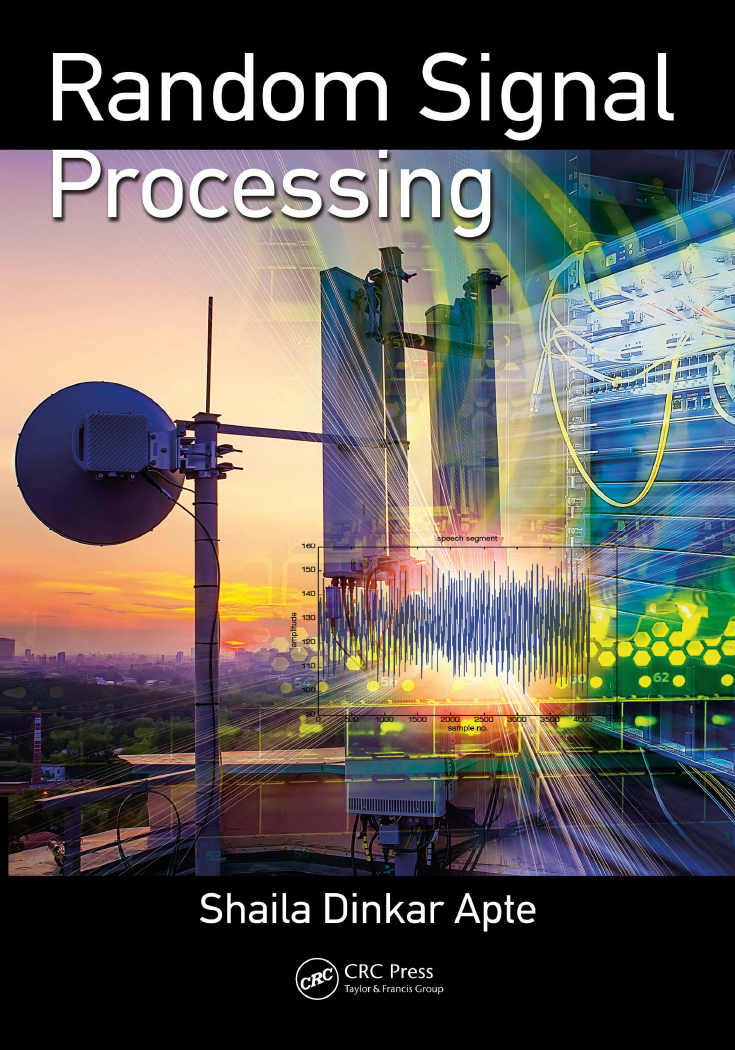
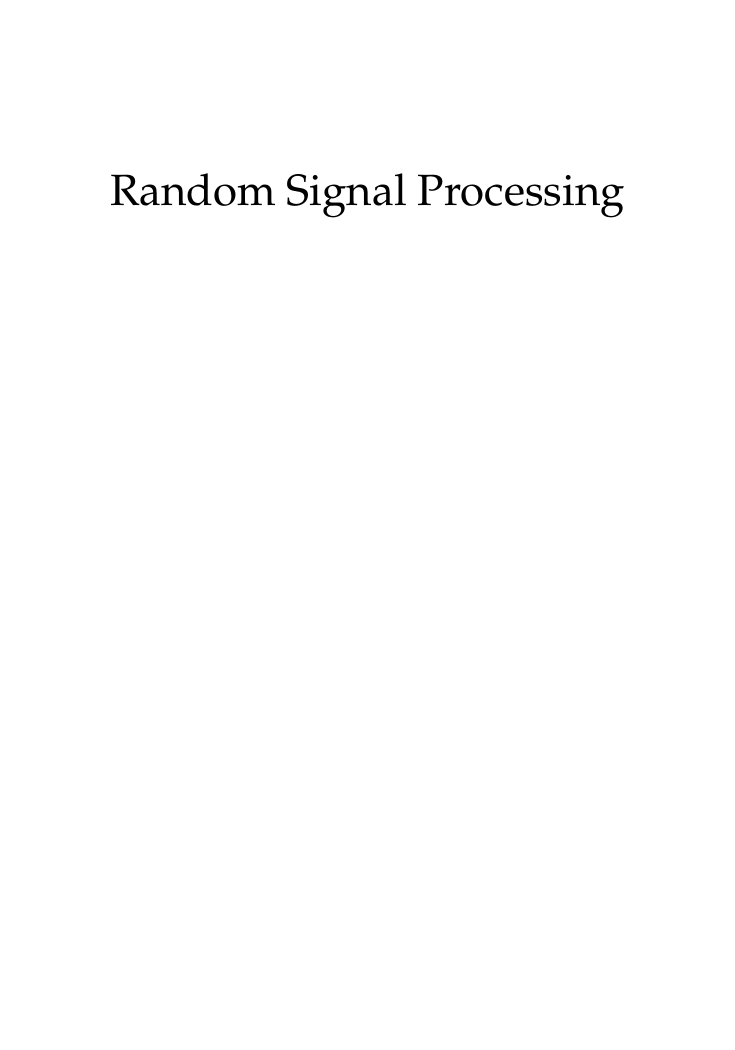


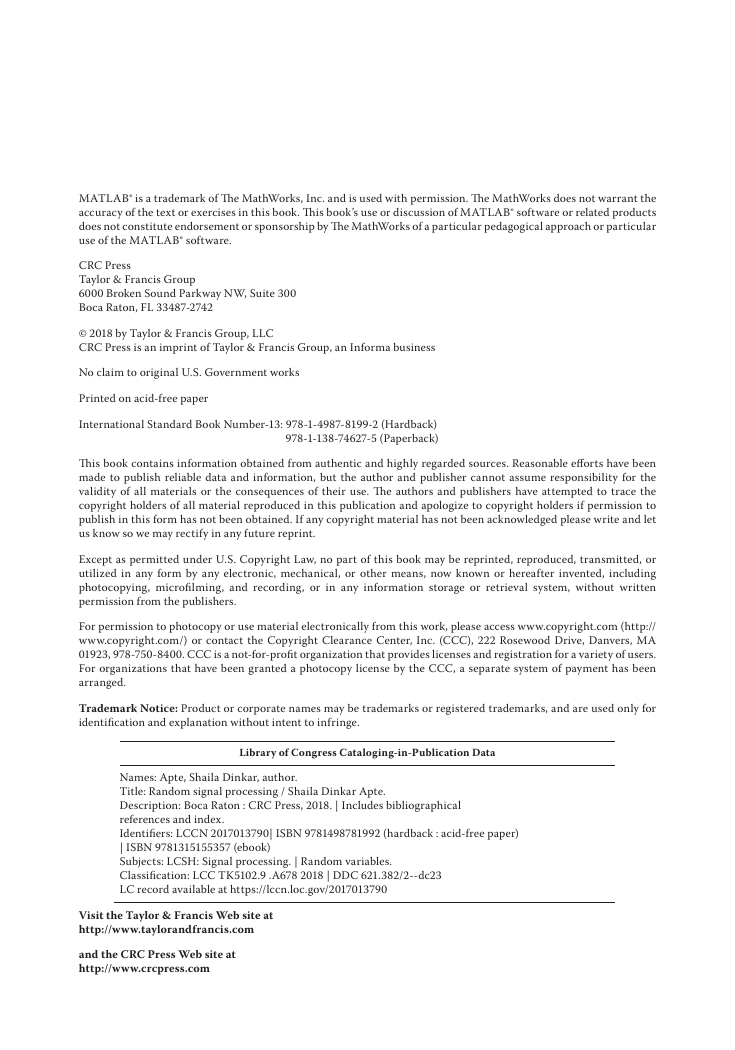
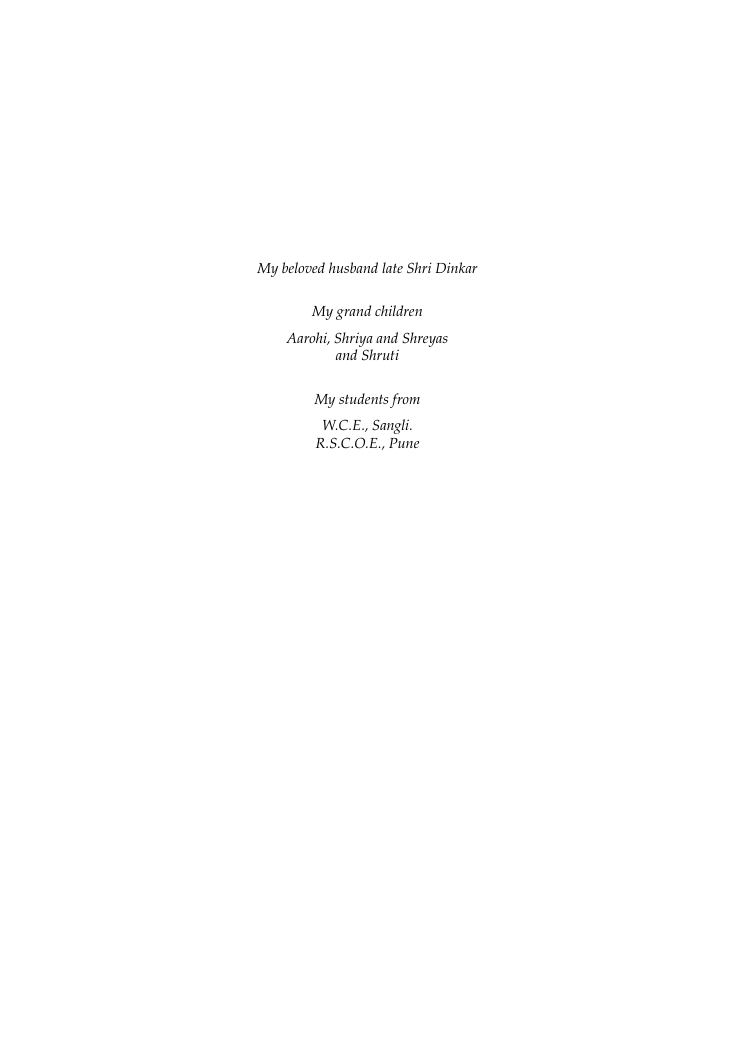

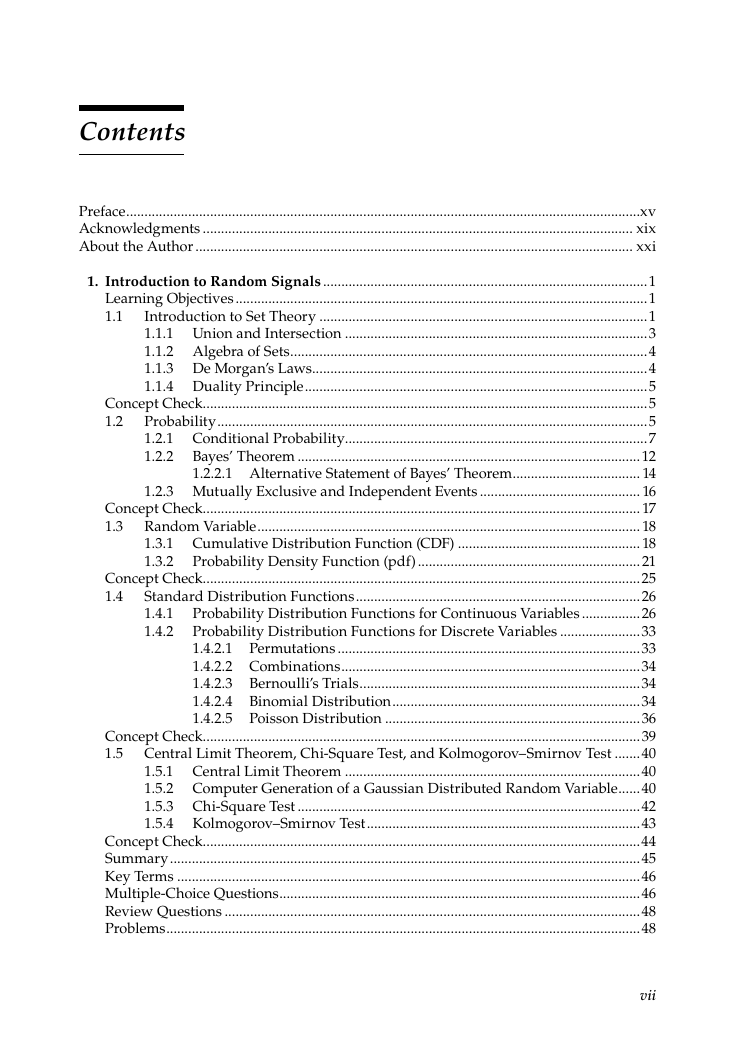








 2023年江西萍乡中考道德与法治真题及答案.doc
2023年江西萍乡中考道德与法治真题及答案.doc 2012年重庆南川中考生物真题及答案.doc
2012年重庆南川中考生物真题及答案.doc 2013年江西师范大学地理学综合及文艺理论基础考研真题.doc
2013年江西师范大学地理学综合及文艺理论基础考研真题.doc 2020年四川甘孜小升初语文真题及答案I卷.doc
2020年四川甘孜小升初语文真题及答案I卷.doc 2020年注册岩土工程师专业基础考试真题及答案.doc
2020年注册岩土工程师专业基础考试真题及答案.doc 2023-2024学年福建省厦门市九年级上学期数学月考试题及答案.doc
2023-2024学年福建省厦门市九年级上学期数学月考试题及答案.doc 2021-2022学年辽宁省沈阳市大东区九年级上学期语文期末试题及答案.doc
2021-2022学年辽宁省沈阳市大东区九年级上学期语文期末试题及答案.doc 2022-2023学年北京东城区初三第一学期物理期末试卷及答案.doc
2022-2023学年北京东城区初三第一学期物理期末试卷及答案.doc 2018上半年江西教师资格初中地理学科知识与教学能力真题及答案.doc
2018上半年江西教师资格初中地理学科知识与教学能力真题及答案.doc 2012年河北国家公务员申论考试真题及答案-省级.doc
2012年河北国家公务员申论考试真题及答案-省级.doc 2020-2021学年江苏省扬州市江都区邵樊片九年级上学期数学第一次质量检测试题及答案.doc
2020-2021学年江苏省扬州市江都区邵樊片九年级上学期数学第一次质量检测试题及答案.doc 2022下半年黑龙江教师资格证中学综合素质真题及答案.doc
2022下半年黑龙江教师资格证中学综合素质真题及答案.doc